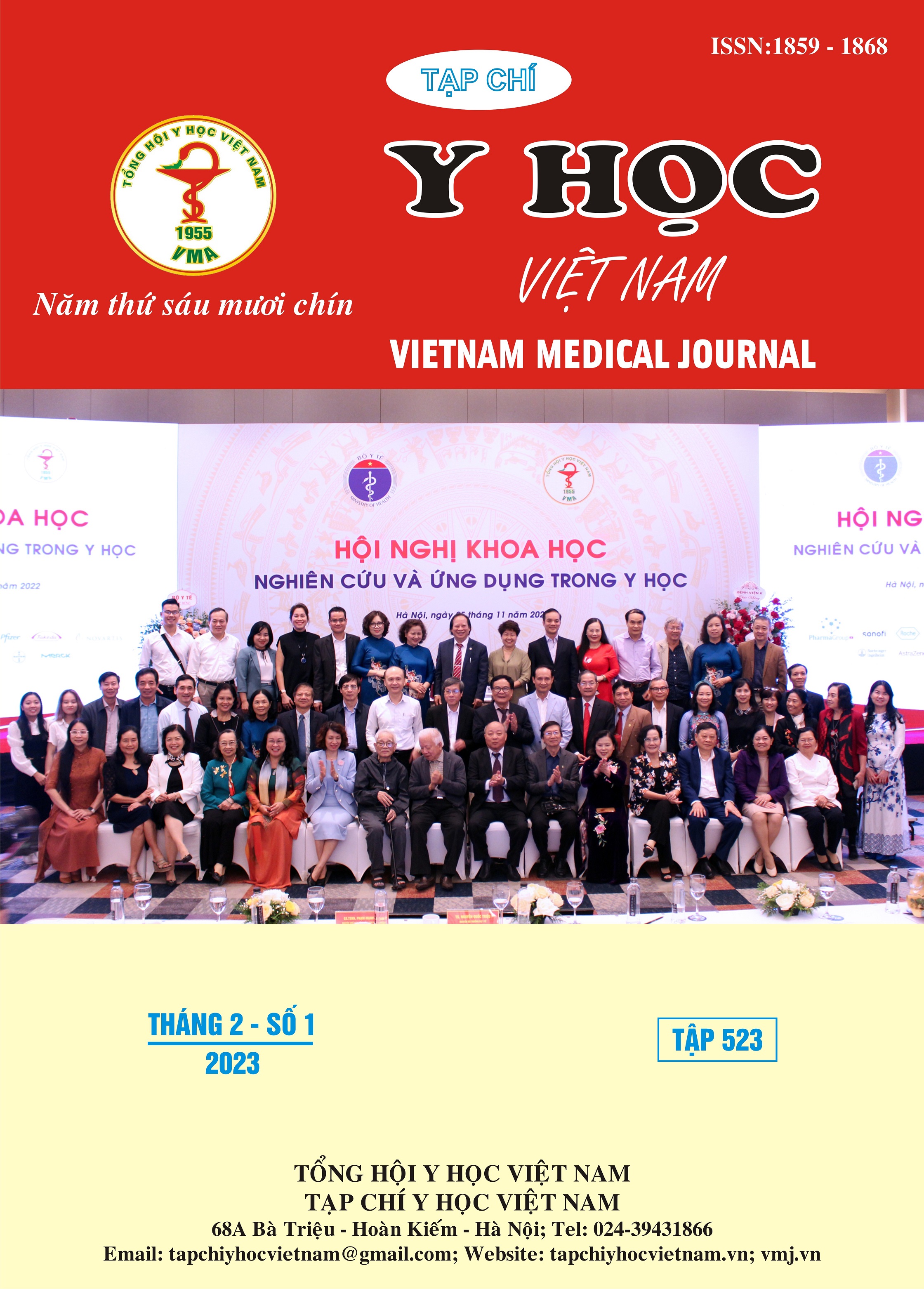NOSOCOMIAL URINARY TRACT INFECTIONS RELATED TO BLADDER CATHETERS AT THE INTENSIVE CARE UNIT
Main Article Content
Abstract
Objective: To evaluate the status of nosocomial urinary tract infections related to bladder catheters at the Intensive Care Unit of Bach Mai Hospital. Subjects: 755 patients (patients) treated at the Intensive Care Unit of Bach Mai Hospital with bladder catheterization from August 2019 to July 2020. Methods: Prospective descriptive study. Quantitative variables are presented as mean and standard deviation; using parametric tests for normally distributed variables and non-parametric tests for non-normally distributed variables; The difference was statistically significant with p < 0.05. Qualitative variables are presented as percentage (%), the difference is statistically significant with p < 0.05. Results: The rate of patients with nosocomial urinary tract infections (UTI) was 5.6% with a frequency of 7.9 patients/1000 days of catheterization. The mean duration of bladder catheterization to the time of diagnosis of nosocomial UTI was 8.4 days (95% CI: 6.56 – 10.22). Candida albicans is the most common strain (31.1%); followed by Candida tropicalis (15.8%), Escherichia coli (11.1%), Klebsiella pneumoniae (11.1%). The strains of Candida albicans, Candida tropicalis have not been found to be resistant to conventional antifungal drugs. E. coli is 100% resistant to Ceftriaxone, Levofloxacine, Cefepime. Klebsiella pneumoniae is resistant to most antibiotics and is only 60% sensitive to Fosfomycin. Conclusion: The rate of nosocomial urinary tract infections is high. Cadida albicans is the most commonly isolated nosocomial urinary tract infection. The isolated gram-negative bacteria were highly resistant to antibiotics.
Article Details
Keywords
nosocomial urinary tract infection, bladder catheter
References
2. Vũ Thị Thanh Hà, Lê Thị Diễm Tuyết: Đánh giá tình trạng nhiễm khuẩn tiết niệu bệnh viện ở bệnh nhân hồi sức cấp cứu có đặt ống thông bàng quang 2004.
3. Nargis Sabir MBBS, Aamer Ikram MBBS: Bacterial biofilm-based catheter-associated urinary tract infections Causative pathogens and antibiotic resistance: 2017.
4. Fisher JF, Kavanagh K, Sobel JD: Candida urinary tract infection: pathogenesis 2011.
5. Bùi Hồng Giang: Nghiên Cứu Đặc Điểm Vi Khuẩn Và Điều Trị Nhiễm Khuẩn Bệnh Viện Tại Khoa Hồi Sức Tích Cực Bệnh Viện Bạch Mai Năm 2012.


